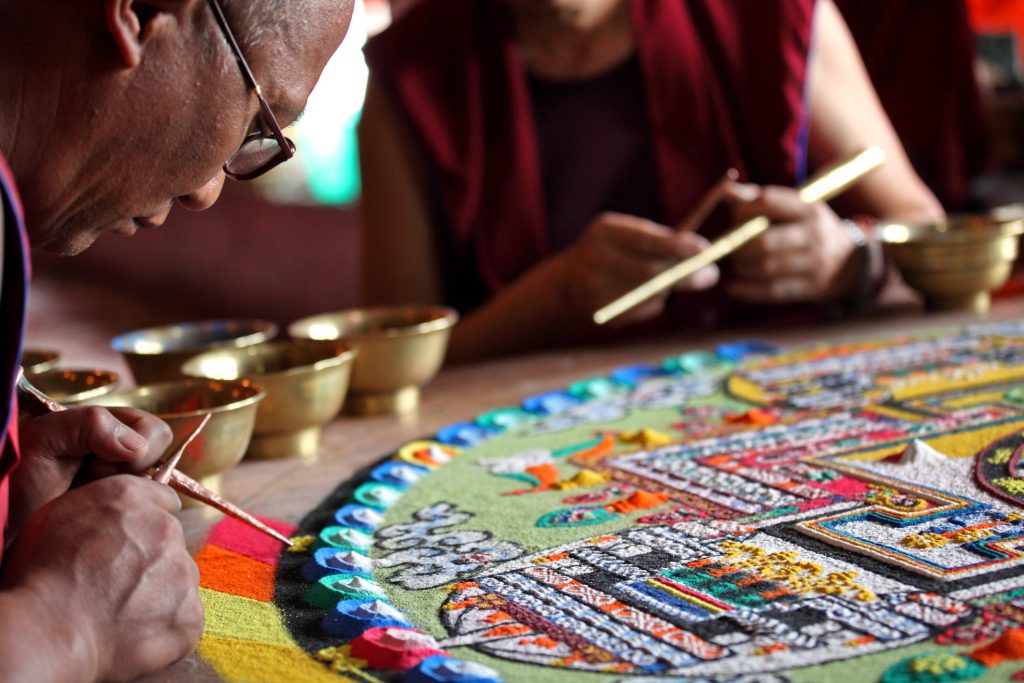The Wheel of Life
In Buddhism and Hinduism, a mandala has profound spiritual significance. It stands for the age-old idea that the universe is a phenomena that never ends and that the wheel of life and death turns repeatedly in a cyclical manner. A mandala is often interpreted as a symbol of the universe in its ideal form, and its creation, therefore, signifies the transformation of a universe of suffering into one of joy. It can also help in meditation by aiding the meditator to focus attention and envision how to achieve the perfect self. In that context, a mandala can be interpreted as representing a spiritual journey that starts from the outside and works its way inwards, peeling through the layers that surround us. It is believed in Tantric Buddhism to help shed the numerous self-delusions that obstruct and restrict one’s spiritual growth by keeping us centered and grounded.
In Bhutan, mandalas are portrayed in many different types of art forms, including paintings, sand art and in schematic representations of sanctums of gods and goddesses. In the mandala, the outer circle of fire usually symbolizes wisdom. The rings also represent the Buddhist exhortation to be always mindful of death, and the impermanence with which samsara or the world is infused. And inside these rings lie the walls of the mandala palace itself, a place occupied by deities and Buddhas.

With every mandala comes its associated liturgy contained in ancient texts known as Tantras. The Tantras carry instructions on how the mandala should be drawn, built and visualized along with the mantras to be recited during its ritual use. As such, a mandala offering in Tantric or Tantric Buddhism is a symbolic offering of the entire universe. And after days or weeks of creating the intricate pattern of a sand mandala, the sand is piled together and scattered in a body of running water to spread its blessings far and wide.

